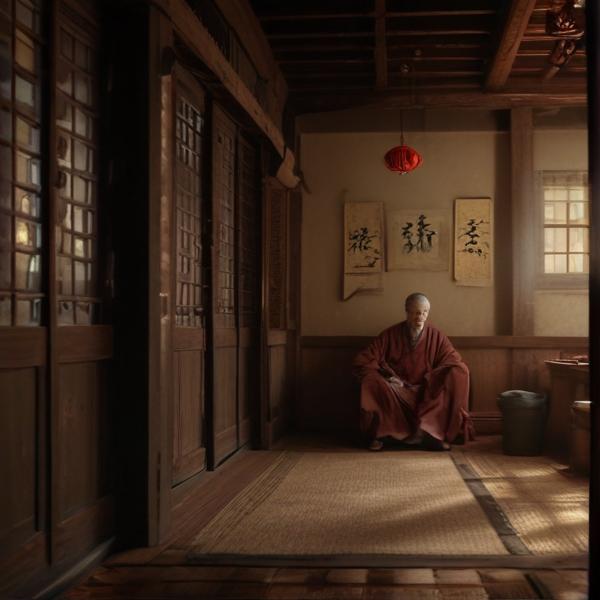基本信息 (Basic Information)
含义与用法 (Meanings & Usage)
中文核心释义 (Core Chinese Meaning): 形容悲凉、凄凉、悲伤的感觉,多用于环境或人的情感。
英文核心释义 (Core English Meaning): desolate, bleak, mournful; used to describe sadness, bleakness in feelings or atmosphere.
象形意义 / 为何这么写 (Pictographic Meaning / Writing Rationale)
文言文释义 (Classical Chinese Meaning)
文言文中“凄”多用于形容环境、情感的悲凉,与现代意义相近。Similar to modern meaning; in Classical Chinese, '凄' mostly described environmental or emotional bleakness.
深入学习 (In-depth Study)
字源故事 (Origin Story)
字形演变 (Character Evolution)
常用词语和例句 (Common Words & Examples)
凄凉 (desolate, bleak; used to describe a lonely or sad atmosphere)
雨中的小路格外凄凉。
Eng: The path in the rain felt especially desolate.
凄惨 (miserable, tragic; refers to someone in extreme pain or misery)
他的遭遇十分凄惨。
Eng: His experience was extremely miserable.
凄清 (cold and lonely; chilly or sad quietness)
夜色中只有风声,显得格外凄清。
Eng: In the darkness of night, only the sound of the wind made it feel especially cold and lonely.
相关成语 (Related Idioms)
相关成语信息待补充。Related idiom information pending.
多语言翻译 (核心释义) (Translations (Core Meaning))
- French: morne, lugubre, triste
- German: trostlos, traurig, düster
- Spanish: desolado, triste, lúgubre
- Italian: desolato, triste, mesto
- Portuguese: desolado, triste, lúgubre
- Russian: печальный, унылый, мрачный
- Arabic: كئيب، كالح، محزن
- Persian: غمگین، دلگیر، غمانگیز
- Dutch: troosteloos, somber, treurig
- Polish: ponury, smutny, żałosny
- Vietnamese: ảm đạm, buồn bã, thê lương
- Ukrainian: похмурий, сумний, безутішний
视频学习资源 (Video Learning Resources)
通过以下链接在热门视频网站搜索 "凄" 的更多讲解:
Search for more explanations of "凄" on popular video sites:
- 在 Bilibili.com 搜索 "凄 字源 说文解字" (Search on Bilibili)
- 在 YouTube.com 搜索 "qī 凄 character origin etymology" (Search on YouTube)
网络参考 (Web References for "凄") ()
网络内容摘要 (Web Content Summary):
-
核心含义:“凄”表示冷清、凄凉、悲伤等情绪,多用于形容环境或人的情感状态宽泛且深沉。 Core meaning: "凄" conveys feelings such as bleakness, desolation, and sorrow; it is commonly used to describe somber moods or desolate settings.
-
象形起源及文化背景:“凄”在甲骨文中由“水”和“妻”组成,“水”代表泪水或寒冷,“妻”有被抢亲的含义,反映了古时与悲伤、冷清相关的文化情境。 Etymology & cultural background: In oracle bone script, "凄" is formed from the radicals for "water" (suggesting tears or cold) and "wife" (with implications of a woman being taken by force), tying the character to emotions of sadness and distress in ancient cultural contexts.
-
常用词语与易混点:“凄”常出现在表示悲凉、哀伤的词组里,如“凄凉”(desolate)、"凄惨"(tragic)、"凄楚"(miserable)等。成语如“凄风苦雨”,形容环境恶劣、心境悲苦。易和“妻”(wife)因形似而混淆,但语义截然不同。 Common collocations & confusions: Often used in words describing sadness or coldness, e.g., "凄凉" (desolate), "凄惨" (tragic), and idioms like "凄风苦雨" (bitter wind and rain, symbolizing distress). Note: "凄" is sometimes confused with "妻" ("wife") due to their similar shapes but they have distinct meanings.
总体而言,“凄”常作为表达悲凉和冷清氛围的关键词,且常出现在文学、成语和诗歌中。 Overall, "凄" is a key character for expressing melancholy or bleakness, and is often found in idioms, literature, and poetry.
凄的解释|凄的意思|汉典"凄"字的基本解释 - 漢典
如:凄绝(十分凄凉或悲伤);凄沧(凄寒沧凉);凄惋(哀伤);凄洏(悲伤流泪) 常用词组 凄哀 凄暗 凄惨 凄楚 凄怆 凄风苦雨 凄梗 凄寒 凄苦 凄厉 凄凉 凄迷 凄凄 凄切 凄清 凄然 凄婉
【凄,淒】的甲骨文金文篆文字形演变含义 - 甲骨文研究网 甲骨文密码字典 在线甲骨文字典研究 - 甲骨文研究网 甲骨文密码字典 在线甲骨文字典 ...
汉字的来历和演变(說文解字 篆體字)(甲骨文)甲骨文密码【甲骨密码】【其他解读】妻,表示被抢成亲的女子。 ... 凄,甲骨文=(水)+(妻,抢亲) rss. ... 汉字甲骨文破译字典》一书中,破解的古诗、竹简等古文作品收录在《新编甲骨文破译案例解析 ...
更多图片 (凄 More Images) ()
